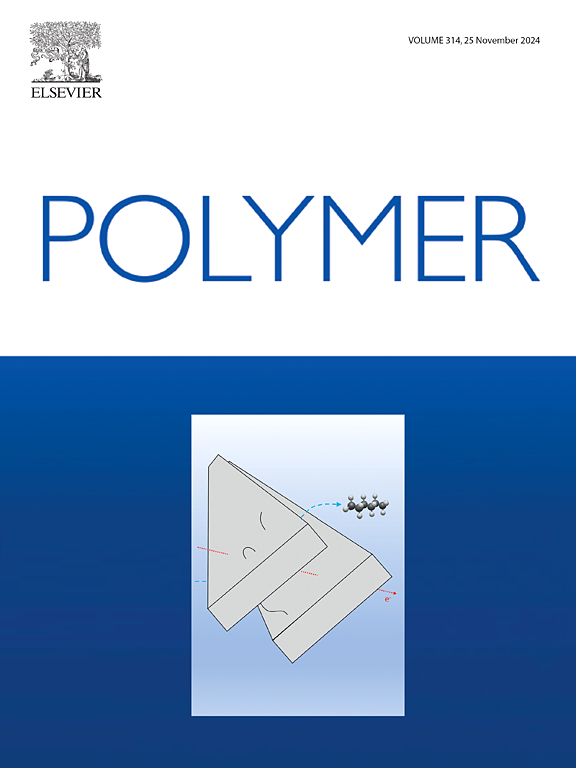Effect of conjugate length of monomeric thiophene backbone on electrochromic performance of benzo[1,2-c:4,5-c']dithiophene-4,8-dione-based D-A polymers
IF 4.1
2区 化学
Q2 POLYMER SCIENCE
引用次数: 0
Abstract
In this work, a series of donor (D)-acceptor (A)-donor (D) type monomers, including TBD, TTBD and TTTBD, were designed and synthesized by modulating the conjugated length of the monomer backbone based on the benzo[1,2-c:4,5-c']dithiophene-4,8-dione acceptor unit. The corresponding polymers PTTBD and PTTTBD were successfully synthesized through electrochemical polymerization, whereas this method was ineffective for the synthesis of PTBD from its monomer TBD. As the conjugated length of the monomeric backbone increased, the absorption spectra of these three monomers TBD, TTBD and TTTBD exhibited a progressive red-shift, and their onset potentials (Eonset) gradually decreased. In addition, PTTBD demonstrated superior electrochemical stability and electrochromic performance, changing color from purple in the neutral state to grey in the oxidized state, with a higher optical contrast of 45.65% and a coloration efficiency (CE) value of 570.84 cm2 C-1 at 1100 nm compared to PTTTBD (27.50% and 265.68 cm2 C-1). These results indicate that the strategy of tuning the conjugated length of the monomer backbone can optimize the electrochromic performance, offering a promising approach to the design of high-performance electrochromic polymers.

求助全文
约1分钟内获得全文
求助全文
来源期刊

Polymer
化学-高分子科学
CiteScore
7.90
自引率
8.70%
发文量
959
审稿时长
32 days
期刊介绍:
Polymer is an interdisciplinary journal dedicated to publishing innovative and significant advances in Polymer Physics, Chemistry and Technology. We welcome submissions on polymer hybrids, nanocomposites, characterisation and self-assembly. Polymer also publishes work on the technological application of polymers in energy and optoelectronics.
The main scope is covered but not limited to the following core areas:
Polymer Materials
Nanocomposites and hybrid nanomaterials
Polymer blends, films, fibres, networks and porous materials
Physical Characterization
Characterisation, modelling and simulation* of molecular and materials properties in bulk, solution, and thin films
Polymer Engineering
Advanced multiscale processing methods
Polymer Synthesis, Modification and Self-assembly
Including designer polymer architectures, mechanisms and kinetics, and supramolecular polymerization
Technological Applications
Polymers for energy generation and storage
Polymer membranes for separation technology
Polymers for opto- and microelectronics.
 求助内容:
求助内容: 应助结果提醒方式:
应助结果提醒方式:


